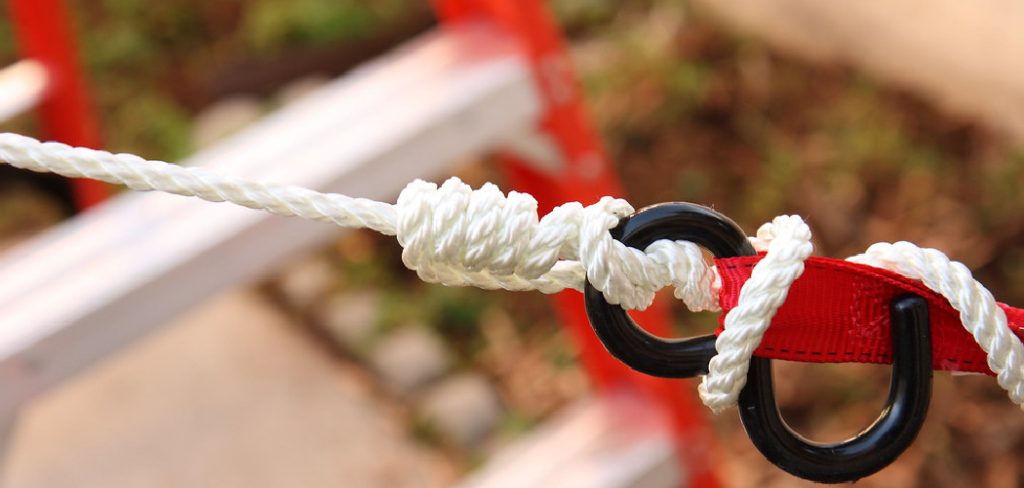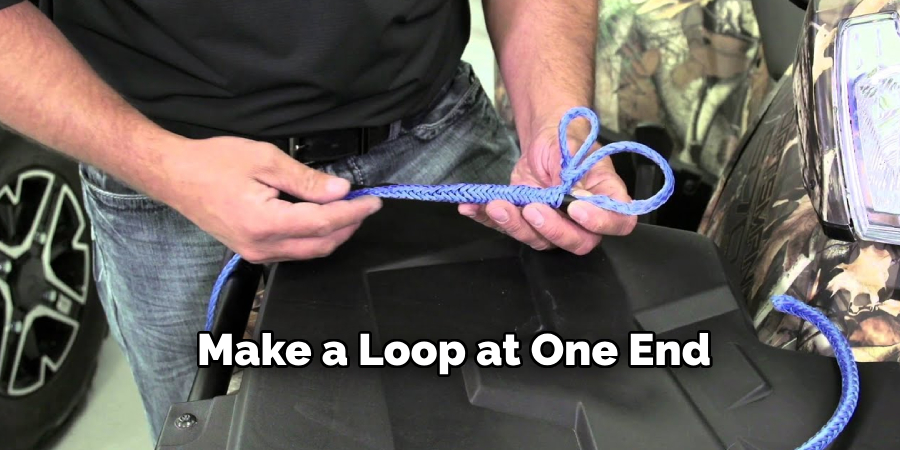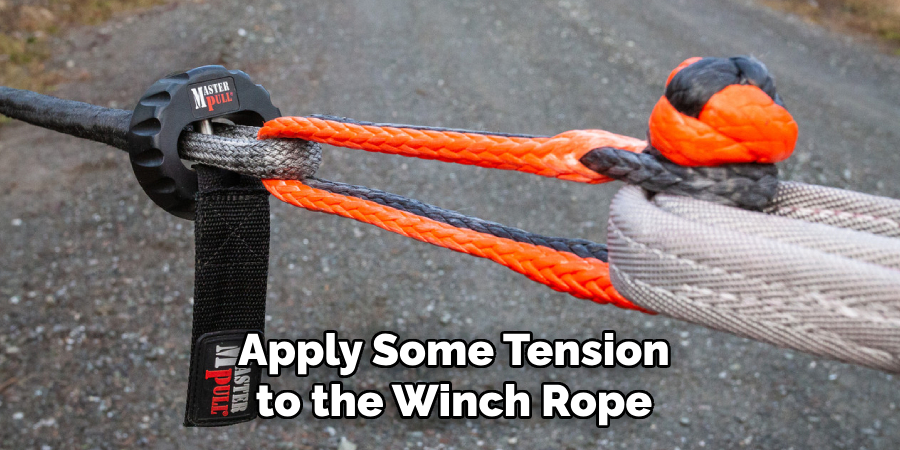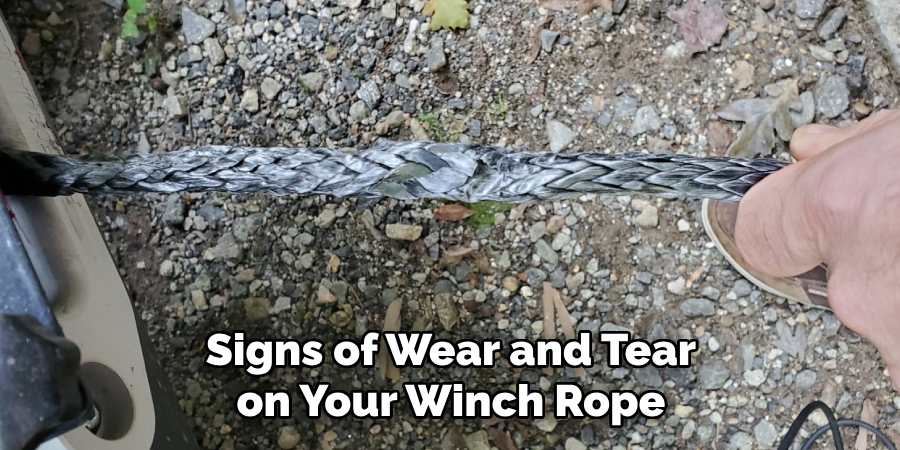Welcome to all adventure seekers and off-roading enthusiasts! We know that a winch is an essential tool in your arsenal. And if you’re reading this, chances are, you’ve encountered the age-old struggle of trying to tie your winch rope onto the hook securely. Fret not because today, we will be sharing our top tips on how to tie winch rope to hook.

Whether you’re new to using a winch or have been struggling with securing it for some time now, this blog post is perfect for any tone of voice. From step-by-step instructions to helpful visuals, get ready to become an expert at tying your winch rope like a pro!
So, let’s dive in and give ourselves peace of mind when using our trusty winches during our adventures.
What Will You Need?
Before we dive into the actual steps, let’s ensure you have all the necessary tools. To successfully tie your winch rope to a hook, you’ll need:
- A winch and its accompanying rope
- A winch hook
- Gloves (optional but recommended)
Now that you have everything prepared, let’s get started on tying our winch rope to the hook.
10 Easy Steps on How to Tie Winch Rope to Hook
Step 1: Preparing the Rope
The first thing you need to do is prepare your rope. Begin by straightening out any tangles or twists in the string. You want it to be as smooth and untangled as possible, making it easier to work with later. Next, make a loop at one end of the rope, leaving a few inches of slack. This loop will be your starting point for tying it onto the hook.

Step 2: Hook Orientation
Before tying your rope to the hook, ensure you’re familiar with its orientation. The majority of winch hooks have an open and closed position. Ensure that the hook is in the closed position before tying the rope. This position prevents the rope from sliding off or getting caught when winching.
Step 3: Rope Placement
With the hook in the closed position, place your looped end on top so it lies horizontally across the opening. The open end of the loop should be facing you. This positioning allows for a secure hold as you continue to tie the winch rope to the hook.
Step 4: Securing the Rope
Now, it’s time to secure the rope to the hook. Insert the free end of the rope through the loop, creating a simple knot. Pull it tightly to ensure it is secure. Remember, it’s crucial to have a firm knot to prevent any slippage during the winching process. Ensure the knot is tight and secure before moving on to the next step.
Step 5: Final Knot
After ensuring that your initial knot is secure, it’s time to tie the final knot. Take the free end of the rope that you used to create the first knot and insert it back through the loop one more time. Pull it through as far as it will go, and then pull the rope tight. This should create a secure hold, which is essential when using the winch. Double-check your knot to make sure it’s tight and secure.
Step 6: Check Your Work
Once you’ve tied the final knot, it’s crucial to double-check your work. Ensure that both ends of the rope are securely attached to the hook and the knot is not loose or slipping. If the knot loosens when you pull on the rope, it may be necessary to re-tie it, ensuring it is tighter and more secure. Remember, safety comes first! A securely tied winch rope is essential for safe and effective winching operations.
Step 7: Test the Rope

After you’ve checked your work and ensured everything is secure, it’s time to test your rope. Apply some tension to the winch rope by slowly retracting it using the winch controls. Ensure the knot holds securely and the rope doesn’t slip off the hook. If it does, you must adjust your knot and secure it further. This step is crucial to ensure the safety and efficacy of your winch rope during real-world usage.
Step 8: Regular Maintenance
Regular maintenance is critical to ensuring the longevity and reliability of your winch rope. After every winching operation, inspect the rope for any signs of wear and tear, such as fraying, tears, or abrasions. Should you notice any damage, replace the rope immediately to avoid accidents. Additionally, always ensure your rope is clean and dry before storing it to prevent mildew and rot.
Step 9: Proper Storage
Proper storage is crucial to ensure the longevity of your winch rope. After use and a thorough inspection, wind the rope neatly onto the winch drum, avoiding any overlapping or crisscrossing. This systematic arrangement prevents the rope from getting tangled or damaged.
For long-term storage, it is advisable to detach the rope from the hook and store it in a cool, dry place, away from direct sunlight or extreme temperatures. Remember, an adequately maintained winch rope will last longer and perform better when you need it the most.
Step 10: Practice Makes Perfect
The last step is about practicing until you become proficient at tying your winch rope to the hook. The more often you practice, the more natural and quicker it will become. Nothing beats hands-on experience, so make it a habit to regularly check and retie your winch rope to ensure it’s always secure and ready to use.
Following these ten easy steps, you know how to tie your winch rope to a hook like a pro. Remember always to prioritize safety and maintenance when working with your winch gear.
5 Additional Tips and Tricks
Tip 1: Invest in Quality Equipment

Always invest in high-quality winching equipment, including ropes and hooks. Cheaper alternatives may seem tempting, but they can often be unreliable and even dangerous for off-roading adventures.
Tip 2: Keep Spare Ropes
Always keep spare ropes on hand, especially if planning a long trip or heading into rough terrain. Having backup gear will ensure that you’re prepared for any unexpected winching situations that may arise.
Tip 3: Use Gloves
Using gloves when tying your winch rope to the hook can provide added grip and prevent any potential injuries from handling rough ropes. Opt for heavy-duty and durable gloves for maximum protection.
Tip 4: Learn Different Knots
While the double knot method is the most common way to tie a winch rope to a hook, learning and practicing other knots is also helpful. This knowledge can be useful during emergencies or if you accidentally damage your rope.
Tip 5: Seek Professional Help
If you need more clarification about tying your winch rope to the hook or run into any issues, feel free to seek professional help. It’s better to be safe than sorry about winching operations.
With these additional tips and tricks, you now know how to tie your winch rope to a hook properly.
5 Things You Should Avoid

1. Avoid Rushing: Never rush while tying your winch rope to the hook. This is a process that should be completed on time. Taking time to secure the rope correctly can prevent accidents and ensure successful winching.
2. Don’t Ignore Wear and Tear: Never ignore signs of wear and tear on your winch rope. Damaged ropes are far more likely to break under tension, which can be dangerous. Always replace worn-out ropes promptly.
3. Avoid Using Damaged Hooks: Never use a hook that shows signs of damage or wear. A damaged hook can easily slip or break, causing a safety hazard.
4. Remember Maintenance: Regularly maintain your winch and its accessories. Cleaning and inspecting your equipment after each use will help extend its service life and ensure it works correctly when needed.
5. Avoid Incorrect Storage: Never store your winch rope improperly. Ensure it’s clean, dry, and neatly wound on the winch drum. For long-term storage, disconnect the rope from the hook and store it separately in a cool, dry place.
With these five things to avoid, you can ensure the safety and effectiveness of your winch rope for all your off-roading adventures.
Conclusion
In conclusion, learning how to tie winch rope to hook is crucial for safety and efficiency when using a winch. By following these steps and understanding the importance of using the right knot for your specific situation, you can ensure that your winching experience goes smoothly without any complications.
Remember to always check for wear and tear on your rope before each use and regularly maintain and clean it to prolong its lifespan. And most importantly, never underestimate the power of a good winch, but also never underestimate the power of knowledge and preparation.
So, next time you’re out on an off-roading adventure or need heavy-duty towing, ensure you are equipped with the proper techniques for tying and securing your winch rope to the hook. Trust me, you’ll thank yourself later.
Now, go out there and conquer those challenging terrains with confidence! Remember to share this valuable information with fellow off-roaders or anyone who might benefit from it. Let’s spread awareness about safe and effective winching practices together! Happy trails!

About
JeepFixes Team is a skilled author for Jeep Fixes, bringing 6 years of expertise in crafting a wide range of jeep fixes. With a strong background in jeep fixes work, JeepFixes Team’s knowledge spans various types of fixtures, from decorative pieces to functional hardware, blending precision with creativity. His passion for jeep fixes and design has made him a trusted resource in the industry.
Professional Focus:
Expert in Jeep Fixes : JeepFixes Team aesthetic specializes in creating durable and innovative jeep fixes, offering both appeal and functionality. His work reflects a deep understanding of jeep fixes techniques and materials.
Sustainability Advocate : He is dedicated to using sustainable practices, ensuring that every fixture is crafted with eco-friendly methods while maintaining high-quality standards.
In his writing for jeep fixes, JeepFixes Team provides valuable insights into the latest trends, techniques, and practical advice for those passionate about jeep fixes, whether they are professionals or DIY enthusiasts. His focus on combining artistry with engineering helps others discover the true potential of jeep in design.
